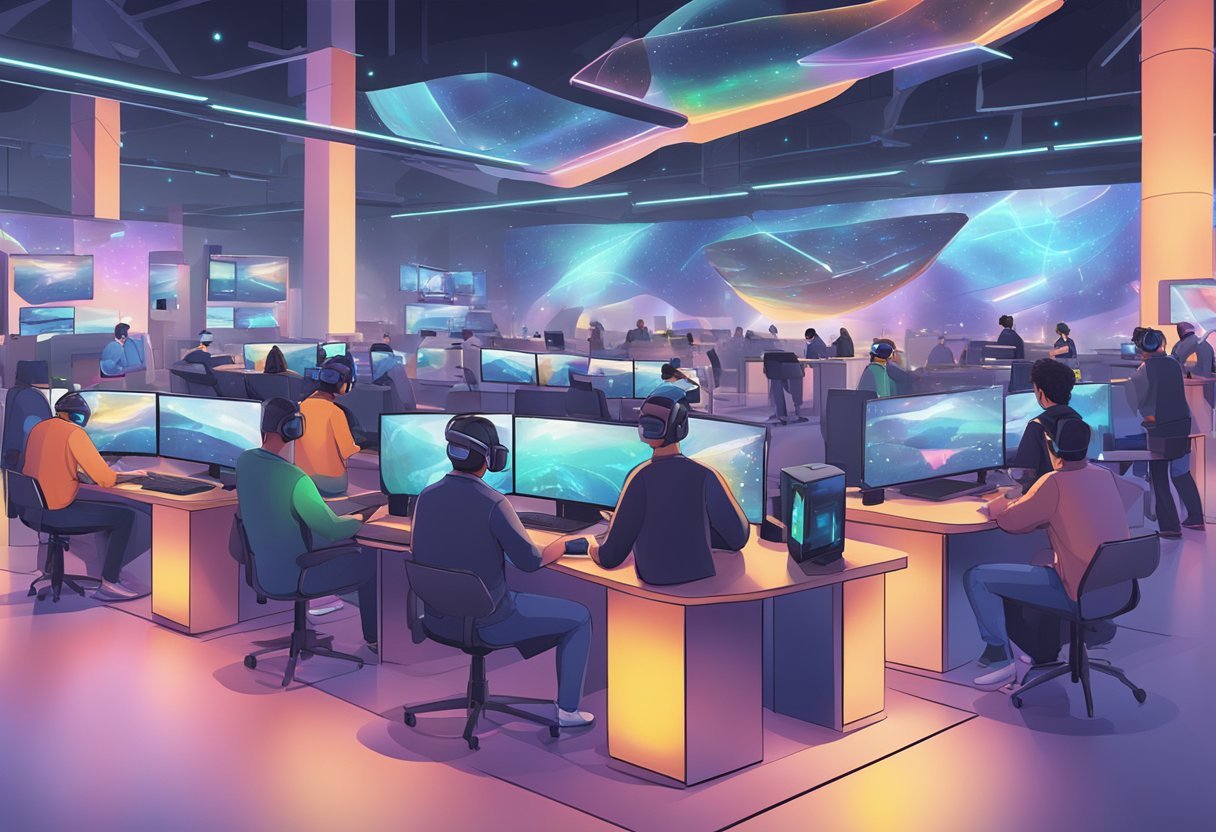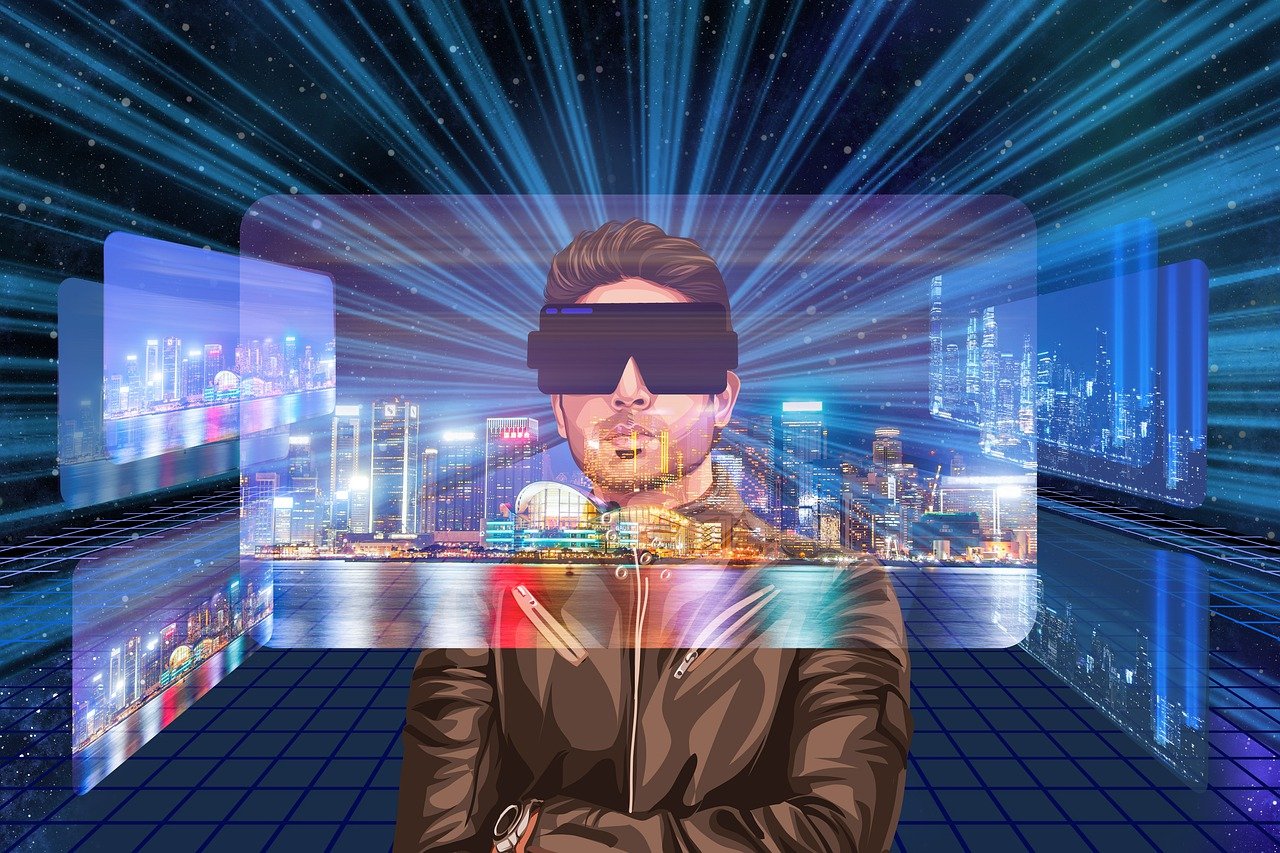The concept of the metaverse has been around for decades, but with the advancements in technology, it is now becoming a reality. The metaverse is essentially a virtual world where people can interact with each other in real-time, just like in the physical world. It is a space where people can work, play, and socialize, all within a virtual environment.
Metaverse media refers to the various forms of media that are used within the metaverse. This includes virtual reality, augmented reality, mixed reality, and internet-based media. These different forms of media are used to create immersive experiences within the metaverse, allowing users to feel like they are truly a part of the virtual world.
As the metaverse continues to evolve, so too will metaverse media. With new technologies being developed all the time, the possibilities for what can be achieved within the metaverse are endless. From gaming and entertainment to education and business, metaverse media is set to revolutionize the way we interact with each other and the world around us.
What is Metaverse Media
Metaverse Media refers to the media content created and consumed within the metaverse. The metaverse is a virtual world that consists of multiple interconnected virtual environments where people can interact with each other and digital objects. The term “metaverse” was coined by Neal Stephenson in his 1992 science-fiction novel Snow Crash.
Examples of Metaverse Media
Metaverse media can take many forms, including virtual reality (VR) games, social media platforms, and virtual events. Some popular examples of metaverse media include Second Life, Roblox, Minecraft, and Fortnite.
Second Life is a virtual world where users can create avatars, socialize with other users, and participate in various activities. Roblox is a gaming platform where users can create and play games in a virtual world.
Minecraft is a sandbox game that allows players to build and explore virtual worlds. Fortnite is a battle royale game that has become a popular platform for virtual events, such as concerts and movie screenings.
How Metaverse Media Works
Metaverse media works by using virtual reality and other immersive technologies to create a sense of presence in a virtual environment.
Users can interact with each other and digital objects using avatars, which are virtual representations of themselves. Metaverse media is often experienced through virtual reality headsets, which provide a more immersive experience than traditional computer screens.
Key Players and Platforms
Some of the key players in the metaverse media industry include Facebook (Meta), Roblox Corporation, Epic Games, and Linden Lab. Facebook (Meta) recently announced its plans to rebrand as a metaverse company, signaling its commitment to the development of the metaverse.
Roblox Corporation is a leading provider of metaverse media content, with over 200 million monthly active users. Epic Games is the creator of Fortnite, which has become a popular platform for virtual events. Linden Lab is the creator of Second Life, one of the earliest virtual worlds and a pioneer in the metaverse media industry.
Metaverse Experiences
The metaverse has opened up a whole new world of possibilities for immersive experiences, entertainment, and social interactions. Here are some of the most popular metaverse experiences:
Gaming and Entertainment
Gaming has been one of the primary drivers of the metaverse. With virtual reality (VR) and augmented reality (AR), gamers can experience immersive gameplay like never before.
Immersive experiences such as virtual concerts and events have also become increasingly popular in the metaverse. With platforms like VRChat and AltspaceVR, users can attend virtual concerts and events from anywhere in the world.
Virtual Work and Education
The metaverse has also revolutionized the way we work and learn. With platforms like Horizon Workrooms, teams can work together in virtual spaces, collaborate on projects, and hold meetings. Education has also been transformed by the metaverse, with virtual classrooms and lectures becoming increasingly popular.
Social Interactions
One of the most exciting aspects of the metaverse is the ability to connect with people from all over the world in virtual spaces. Social VR platforms like VRChat and AltspaceVR allow users to interact with others in virtual environments, attend events, and explore new worlds. The metaverse has also opened up new opportunities for socializing, dating, and even networking.
The metaverse has created a new frontier for immersive experiences, entertainment, work, education, and social interactions. With the potential to generate trillions of dollars in value by 2030, the metaverse is set to become a major part of our digital lives in the years to come.
Technical Infrastructure
The technical infrastructure of the metaverse is critical to its success. This section will explore the hardware and devices, software and development, and standards and interoperability that are necessary for the metaverse to function smoothly.
Hardware and Devices
The metaverse requires a robust hardware and device ecosystem to support its immersive experiences. Computer and mobile devices are the primary means of accessing the metaverse. Oculus VR, a subsidiary of Facebook, is one of the leading companies in the virtual reality (VR) space and has developed the Oculus Quest 2 headset, which is specifically designed for use in the metaverse.
Software and Development
Software and development are critical components of the metaverse’s technical infrastructure. Developers must create applications and experiences that are compatible with various devices and platforms. The metaverse relies on a wide range of software and development tools, including cloud computing, edge computing, and 5G networks.
Standards and Interoperability
Standards and interoperability are essential to the metaverse’s success, as they ensure that different devices and platforms can communicate with each other seamlessly. National standardization organizations should encourage metaverse industries to adopt common standards, including those related to intellectual property, security, and privacy.
The technical infrastructure of the metaverse is essential to its success. The metaverse requires a robust hardware and device ecosystem, software and development tools, and common standards and interoperability. These components must work together seamlessly to create a seamless and immersive experience for users.
Economic and Social Impact
The emergence of the metaverse has brought about significant economic and social impacts. The metaverse has created a new digital economy that is built on blockchain technology, cryptocurrencies, and non-fungible tokens (NFTs). The digital economy has provided new marketplaces for buying and selling virtual assets, including virtual real estate, clothing, and other digital items.
Digital Economy and Marketplaces
The digital economy has created new investment opportunities for individuals and companies alike. The metaverse has provided a new platform for investment in virtual assets, which has led to the creation of new marketplaces for buying and selling virtual assets.
These marketplaces have provided new opportunities for individuals and companies to generate revenue, and have also created new job opportunities in the digital economy.
The digital economy has also created new challenges for governance and ownership, as virtual assets are not subject to the same laws and regulations as physical assets. This has led to the development of new governance structures for the metaverse, which are designed to ensure that virtual assets are protected and that ownership is clearly defined.
Social Dynamics and Governance
The metaverse has also had significant social impacts, as it has created new opportunities for social interaction and collaboration. The metaverse has provided a new platform for social interaction, which has led to the creation of new communities and social networks.
These communities have provided new opportunities for individuals to connect with others who share similar interests and hobbies.
The metaverse has also created new challenges for governance, as the digital economy is not subject to the same laws and regulations as the physical economy.
This has led to the development of new governance structures for the metaverse, which are designed to ensure that virtual assets are protected and that ownership is clearly defined. These governance structures are essential for ensuring that the metaverse remains a safe and secure platform for social interaction and economic activity.
The metaverse has created a new digital economy that is built on blockchain technology, cryptocurrencies, and non-fungible tokens.
The digital economy has provided new marketplaces for buying and selling virtual assets, and has also created new investment opportunities for individuals and companies alike.
The metaverse has also had significant social impacts, as it has created new opportunities for social interaction and collaboration. The development of new governance structures for the metaverse is essential for ensuring that virtual assets are protected and that ownership is clearly defined.
Security, Privacy, and Ethics
Data Protection
Data protection is a significant concern in the metaverse. As more people engage with the metaverse, there is a need to ensure that their data is protected. Metaverse media companies must ensure that they collect, process, and store user data in compliance with data protection regulations. They must also inform users of the data they collect and how they use it.
Moreover, transparency is essential in data protection. Metaverse media companies must provide users with access to their data and enable them to control it. They should also provide users with an option to delete their data when they want to.
User Safety and Content Moderation
User safety and content moderation are critical issues in the metaverse. Metaverse media companies must ensure that users are safe from abuse and harassment. They must also ensure that the content on their platforms is appropriate and does not contain misinformation.
To achieve this, metaverse media companies must have robust content moderation policies. They must also have mechanisms to report abusive content and users. They must monitor their platforms for misleading or harmful content and remove it promptly.
Security, privacy, and ethics are crucial concerns in the metaverse. Metaverse media companies must ensure that they protect user data and provide transparency. They must also ensure user safety and appropriate content moderation. By doing so, they can create a safe and ethical metaverse for everyone.
Frequently Asked Questions
What is a Metaverse Example?
A metaverse example is a shared virtual space where multiple users can interact with each other and the environment in real-time.
It is a fully immersive digital world that can be accessed through various devices like computers, smartphones, and virtual reality headsets. Some popular examples of metaverse include Second Life, Roblox, and Decentraland.
What is the Main Purpose of Metaverse?
The main purpose of metaverse is to provide a fully immersive digital experience where users can interact with each other and the environment in real-time.
It can be used for various purposes like gaming, socializing, education, and commerce. Metaverse allows users to create their own digital identities, explore new worlds, and engage in activities that are not possible in the physical world.
Why is Metaverse Struggling?
Metaverse is struggling because it is a relatively new concept that is still in the development stage. It requires a lot of resources and expertise to create a fully immersive digital world that can be accessed by millions of users. Moreover, metaverse is facing various technical, social, and economic challenges like scalability, interoperability, security, privacy, and regulation.
Why are People Against Metaverse?
Some people are against metaverse because they believe that it can have negative social and psychological effects on users. They argue that metaverse can lead to addiction, isolation, and loss of privacy. Moreover, they believe that metaverse can be used for illegal activities like cybercrime, terrorism, and money laundering.
What is the Ownership Structure of Metaverse Assets and Spaces?
The ownership structure of metaverse assets and spaces is based on blockchain technology. It allows users to own and trade digital assets like virtual land, buildings, and items. Moreover, it enables users to create and enforce their own rules and regulations for the metaverse. The ownership of metaverse assets and spaces is decentralized, which means that it is not controlled by any central authority.
Why do People not Like Metaverse?
Some people do not like metaverse because they believe that it is a waste of time and resources. They argue that metaverse is a virtual world that has no real value or meaning. Moreover, they believe that metaverse can be addictive and can lead to a loss of productivity and creativity.
Is Metaverse being Shut Down?
No, metaverse is not being shut down. It is a growing industry that is attracting a lot of investment and attention from various stakeholders like investors, developers, and users. Moreover, metaverse has the potential to revolutionize various industries like gaming, entertainment, education, and commerce.




